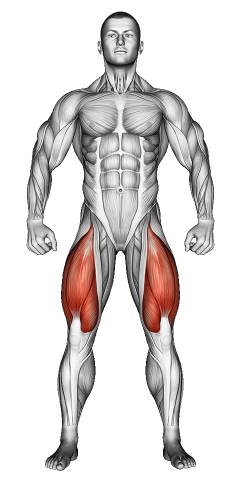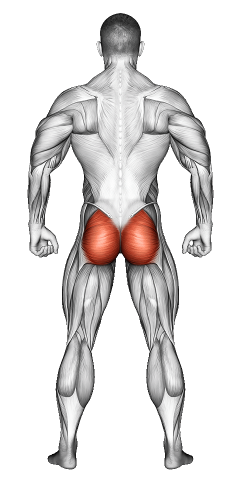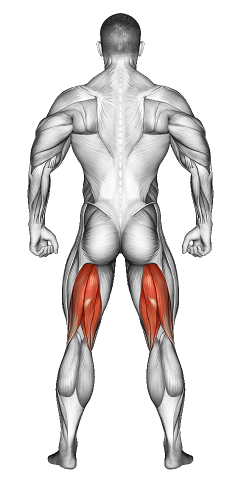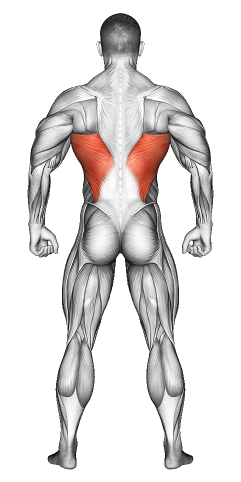Bound Extended Side Angle Pose (Baddha Utthita Parsvakonasana): Video Tutorial & Yoga Guide

Written By: Claude Michael
Updated: Jan 14, 2025
| Workout | Bound Extended Side Angle Pose (Baddha Utthita Parsvakonasana) |
| Primary Muscle Group | Quads |
| Secondary Muscle Group | Glutes, Hamstrings, Lats |
| Equipment Required | None |
| Force Type | Bodyweight |
| Mechanics | Strength, Flexibility, and Stability |
| Exercise Type | Yoga and Stretching |
| Difficulty | Intermediate to Advanced |
Bound Extended Side Angle Pose (Baddha Utthita Parsvakonasana): Video Tutorial & Yoga Guide
- 1.Bound Extended Side Angle Pose (Baddha Utthita Parsvakonasana): Muscle Groups
- -1.1Primary Muscle Group
- -1.2Secondary Muscle Group
- 2.Bound Extended Side Angle Pose (Baddha Utthita Parsvakonasana): Step-by-Step Guide
- 3.Bound Extended Side Angle Pose (Baddha Utthita Parsvakonasana): Overview
- 4.Bound Extended Side Angle Pose (Baddha Utthita Parsvakonasana): Benefits
- 5.Bound Extended Side Angle Pose (Baddha Utthita Parsvakonasana): Pro Tips & Advanced Techniques
- 6.Bound Extended Side Angle Pose (Baddha Utthita Parsvakonasana): Progression Plan
- 7.Bound Extended Side Angle Pose (Baddha Utthita Parsvakonasana): Frequently Asked Questions (FAQs)
Secondary Muscles Group
Bound Extended Side Angle Pose (Baddha Utthita Parsvakonasana): Step-by-Step Guide
- Step 1: Start in Warrior II Pose (Virabhadrasana II). Step your feet wide apart and turn your front foot out at a 90-degree angle. Bend your front knee so it aligns above your ankle, and keep your back leg straight. Stretch your arms out at shoulder height.
- Step 2: Place your front elbow on your front knee. Stretch your top arm up and over your head, creating a long diagonal line from your back heel to your fingertips. Open your chest toward the ceiling.
- Step 3: Bring your lower arm inside your front leg. Drop your front hand to the floor or onto a block if needed. Extend your top arm over your head to deepen the stretch.
- Step 4: Bind your arms. Bring your bottom arm under your front leg and your top arm behind your back. Clasp your hands togClaude or use a yoga strap if you can’t reach. Open your chest and twist slightly upward.
- Step 5: Hold the pose. Keep your front knee bent and your back leg strong. Stay grounded through your back heel and maintain the bind for 3-5 breaths.
- Step 6: Release the pose. Unbind your arms, return to Warrior II, and repeat on the other side.
Bound Extended Side Angle Pose (Baddha Utthita Parsvakonasana): Overview
Bound Extended Side Angle Pose (Baddha Utthita Parsvakonasana) is a deep stretch that enhances flexibility and strength. It opens your hips, chest, and shoulders while engaging your legs and core. The bind adds an extra challenge, improving your balance and coordination.
Bound Extended Side Angle Pose (Baddha Utthita Parsvakonasana): Benefits
- • Stretches and strengthens legs, hips, and shoulders.
- • Opens the chest, improving lung capacity and breathing.
- • Enhances flexibility in the spine and shoulders.
- • Improves balance and focus.
- • Boosts circulation and stimulates internal organs.
Bound Extended Side Angle Pose (Baddha Utthita Parsvakonasana): Pro Tips & Advanced Techniques
- Stay Grounded: Press firmly into the back heel to maintain stability.
- Use Props: Use a yoga strap or block if your flexibility limits the bind.
- Engage Your Core: Keep your abs active to support your balance.
- Open Your Chest: Twist your torso upward to deepen the pose and enhance the stretch.
Bound Extended Side Angle Pose (Baddha Utthita Parsvakonasana): Progression Plan
Beginner
Intermediate
Advanced
Bound Extended Side Angle Pose (Baddha Utthita Parsvakonasana): Frequently Asked Questions (FAQs)
What does this pose focus on?
+It focuses on stretching the hips, legs, shoulders, and chest while strengthening the lower body.
Is this pose suitable for beginners?
+Beginners can modify by skipping the bind and using props like blocks or straps.
How long should I hold this pose?
+Hold for 3-5 breaths on each side, gradually increasing as you build strength and flexibility.
What should I avoid in this pose?
+Avoid collapsing your chest or putting too much pressure on your front leg. Focus on balance and alignment.
Can this pose help improve flexibility?
+Yes, it stretches the hips, shoulders, and spine, improving overall flexibility.
Share
Don’t Wish for It, Work for It – Join the FlexXP Newsletter Today!
Thank you for signing up for the FlexXP Newsletter!
This site is protected and the Google Privacy Policy and Terms of Service apply.



